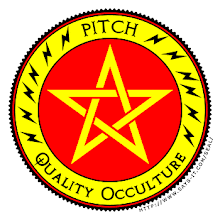
Unlike the Christo-Pagans, I don't puzzle over British Traditional Witchcraft (BTW) at all. BTW makes good sense to me, as far as postmodern Neo-Pagan movements go.As far as me, a generalist Neo-Pagan practitioner from California, recognizing in spiritkinship with BTW.
British Traditional Witchcraft, when I first learned of it from books like Stewart Farrar'sWhat Witches Do, Margot Adler's Drawing Down The Moon, and Isaac Bonewitz'sReal Magic looked suitable in all respects to me. I didn't know any BTW practitioners atthat time nor did I anticipate meeting any. But the approach to polytheistic magic withinthe Western constellation of cultures resonated with my own experience and my own outlook.
I was not, however, convinced that BTW actually represented a relict of a prehistoric, or even a medieval, religion rooted in polytheistic magic. What I figured was that littlebits of lore and custom survived here and there. Antiquarians, folklorists, historians,ethnographers, writers, and others had gathered and preserved these little bits. Somehad looked them over, seeking patterns and clues and grounds for speculation. They hadcome to us re-packaged and re-interpreted in the interests of literate, modern, technologicalcultures. Or in the interests of those who wanted to occupy some new ground in thealleys and by-ways of modern technological cultures.
My concern, mostly, was how BTW promised to help me in adapting, psychologically and spiritually to the circumstances of living in those cultures. The historical claims, while interesting to a playful sensibility, seemed not so important compared to BTW offering a set of tools, skills, and meanings that enabled a productive personal adaptation. To BTWholding out an opportunity to take a path out of alienation into well-being, well-being in the light--or dark--of wholism.
More tellingly, I glimpsed in BTW elements of an emerging post modern spiritualitythat was similar to, maybe even promised to fill out, elements of my own emerging postmodern spirituality.
Here's a description of post modern spirituality offered by David Ray Griffin in an interviewwith Alan AtKisson from Redefining The Divine (I've highlighted some concepts that arecharacteristic of Neo-Pagan Craft as I see it):
There are so many different ways to describe postmodern spirituality. You can say it's pacific,it's ecological, it's a spirituality of creativity, it's a reenchantment of the universe. But perhapsthe best way to get at it, as a summary term, would be pan-en-theism: the idea that the worldis in God - God is something like the soul of the universe - and God is present in all things.As some mystics have said, we swim in God.
I found BTW attractive, in addition, because it was, in the period when I learned of it, a small subculture within the counterculture that I identified with. BTW was most definitelynot an element of the dominant culture. It might, I figured, offer ways to change the dominantculture.
Years later, I did meet BTW practitioners in Northern California, and I took up a BTWside of my practice.
David Ray Griffin interview at:
http://www.context.org/ICLIB/IC24/Griffin.htm
Powered by Zoundry Raven


No comments:
Post a Comment